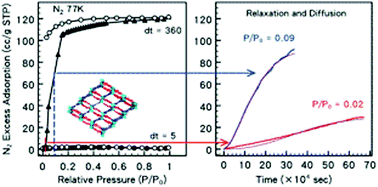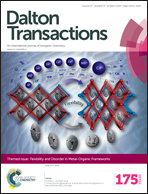A generalized adsorption-phase transition model to describe adsorption rates in flexible metal organic framework RPM3-Zn†
Abstract
Flexible gate-opening metal organic frameworks (GO-MOFs) expand or contract to minimize the overall free energy of the system upon accommodation of an adsorbate. The thermodynamics of the GO process are well described by a number of models, but the kinetics of the process are relatively unexplored. A flexible GO-MOF, RPM3-Zn, exhibits a significant induction period for opening by N2 and Ar at low temperatures, both above and below the GO pressure. A similar induction period is not observed for H2 or O2 at comparable pressures and temperatures, suggesting the rate of opening is strongly influenced by the gas-surface interaction rather than an external stress. The induction period leads to severe mass transfer limitations for adsorption and over-prediction of the gate-opening pressure. After review of a number of existing adsorption rate models, we find that none adequately describe the experimental rate data and similar timescales for diffusion and opening invalidate prior reaction-diffusion models. Statistically, the rate data are best described by a compressed exponential function. The resulting fitted parameters exceed the expectations for adsorption but fall within those expected for phase transition. By treating adsorption as a phase transition, we generalize the Avrami theory of phase transition kinetics to describe adsorption in both rigid and flexible hosts. The generalized theory is consistent with observed experimental trends relating to induction period, temperature, pressure, and gas-substrate interaction.

- This article is part of the themed collection: Flexibility and Disorder in Metal-Organic Frameworks

 Please wait while we load your content...
Please wait while we load your content...